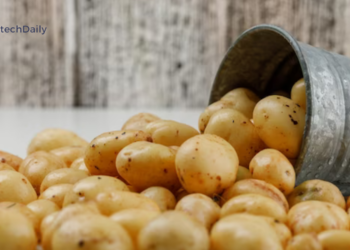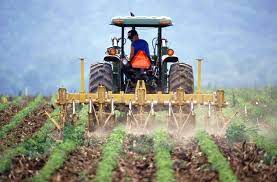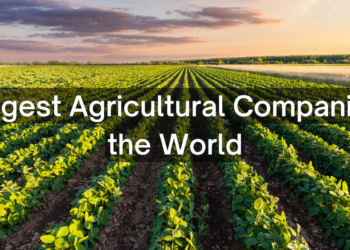Organic and regenerative agriculture has been growing in popularity in recent years as consumers become more aware of the impact of their food choices on the environment. These methods aim to promote sustainable food production while reducing the environmental impact of farming.
Organic Agriculture:
Organic agriculture is a method of farming that relies on the use of natural processes to grow crops and manage soil fertility. This approach to agriculture prohibits the use of synthetic pesticides, herbicides, and fertilizers and instead relies on natural methods such as crop rotation, composting, and the use of beneficial insects to manage pests and diseases. Organic agriculture is based on the principles of sustainable agriculture and seeks to promote the health of the soil, ecosystem, and the environment as a whole.

One of the key principles of organic agriculture is the avoidance of synthetic chemicals, which can have harmful effects on the environment and human health. Instead, organic farmers rely on natural methods such as crop rotation, composting, and the use of beneficial insects to manage pests and diseases. This approach helps to maintain soil fertility and promote the health of the ecosystem while reducing the negative impact of farming on the environment.
Another important aspect of organic agriculture is the use of diversified crop rotations, which helps to maintain soil health and fertility. This is achieved by rotating crops and using cover crops, which help to improve soil structure, reduce erosion, and fix nitrogen. Additionally, organic farmers use compost and other organic matter to provide essential nutrients to the soil and promote healthy soil biology.
Organic agriculture also places a strong emphasis on animal welfare, with farmers using humane methods to manage livestock. This includes the use of pasture-based systems, which provide animals with access to fresh air, sunlight, and a diverse range of forage. This approach to livestock management not only promotes animal welfare but also helps to maintain soil health and fertility, as the animals help to cycle nutrients through the system.
Regenerative Agriculture:
Regenerative agriculture is a more holistic approach to farming that seeks to improve soil health and biodiversity while reducing the carbon footprint of farming operations. This is achieved through practices such as cover cropping, reduced tillage, and the integration of livestock into farming operations. Regenerative agriculture is based on the principles of agroecology and seeks to promote the health of the soil and ecosystem as a whole.
The main focus of regenerative agriculture is on soil health, which is considered the foundation of a healthy and productive ecosystem.
This is achieved through practices such as reduced tillage, which helps to improve soil structure and promote the growth of soil microbes and cover cropping, which helps to add organic matter to the soil and reduce erosion.
Regenerative agriculture also places a strong emphasis on the integration of livestock into farming operations, as this helps to cycle nutrients through the system and maintain soil health.
This is achieved through the use of pasture-based systems, which provide animals with access to fresh air, sunlight, and a diverse range of forage.
In addition to promoting soil health, regenerative agriculture also seeks to reduce the carbon footprint of farming operations.
This is achieved through the use of practices such as cover cropping and reduced tillage, which help to store carbon in the soil and reduce emissions from the use of synthetic fertilizers and pesticides.
Challenges Facing Organic and Regenerative Agriculture:
Despite their popularity, organic and regenerative agriculture face several challenges that may hinder their growth in the future. These include:
- Cost: Organic and regenerative methods are often more labor-intensive and require higher investment in equipment and infrastructure, making them more expensive than conventional methods.
- Scalability: The difficulty in scaling these methods to meet the growing demand for sustainable food is a major challenge facing organic and regenerative agriculture.
- Certification: Organic certification is a complex and time-consuming process that requires significant resources from farmers.
- Market Access: Many small-scale organic and regenerative farmers struggle to access markets for their products, making it difficult for them to sell their crops at competitive prices.
Opportunities for Growth:
Despite these challenges, there are several opportunities for organic and regenerative agriculture to grow in the future. These include:
- Consumer Demand: As consumers become more aware of the impact of their food choices on the environment, the demand for organic and regenerative products is growing.
- Government Support: Many governments are recognizing the importance of sustainable agriculture and are providing support for farmers who adopt organic and regenerative methods.
- Technology: The use of technology in agriculture is increasing, and there are opportunities for farmers to use technology to improve the efficiency and scalability of organic and regenerative methods.
The Role of Technology in Organic and Regenerative Agriculture:

Technology has the potential to play a major role in the future of organic and regenerative agriculture. There are several areas where technology can have a positive impact, including:
- Precision Agriculture: Precision agriculture technologies, such as drones, sensors, and GPS mapping, can be used to collect data on soil and crop conditions and make informed decisions about planting and management.
- Livestock Management: Technology can be used to improve the efficiency and sustainability of livestock production, including feed management, waste management, and the tracking of animal health and behavior.
- Market Access: Technology can be used to connect farmers with consumers, providing small-scale organic and regenerative farmers with access to markets for their products.
- Certification: Technology can be used to streamline the organic certification process, making it easier for farmers to obtain certification and access markets for their products.
Conclusion:
Organic and regenerative agriculture is growing in popularity as consumers become more conscious of the impact of their food choices on the environment. These methods offer a promising alternative to conventional agriculture, providing opportunities for sustainable food production and improved soil health.
Despite the challenges facing organic and regenerative agriculture, such as cost, scalability, and certification, there are also significant opportunities for growth, including increased consumer demand, government support, and the use of technology.
The use of technology in organic and regenerative agriculture has the potential to play a major role in improving the efficiency and scalability of these methods. From precision agriculture and livestock management to market access and certification, technology can help farmers to overcome many of the challenges they face and tap into the growing demand for sustainable food.
In conclusion, the future of organic and regenerative agriculture is bright and holds great promise for the future of sustainable food production. With the support of the government, the growing awareness of consumers, and the advancements in technology, organic and regenerative agriculture are well positioned to meet the challenges of the future and provide a sustainable alternative to conventional agriculture.













